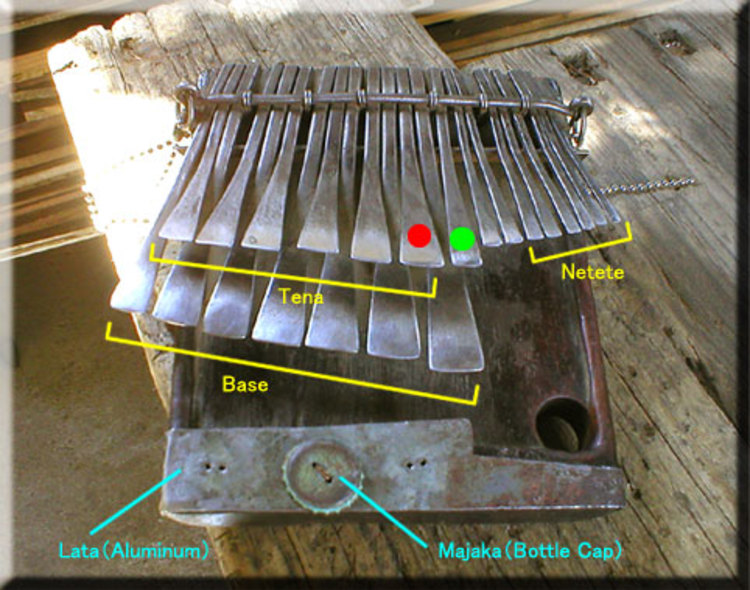
The Sunday Mail

THE history of mbira begins at the time of Great Zimbabwe, where the roots of the Shona people began. Great Zimbabwe is the Munhumutapa Kingdom, which appeared in Southern Africa in the 14th century. The ruins of its pyramids and stone structures still remain.
 A spirit came to Earth at this time, and it is believed that the Shona people were taught by this spirit how to make the musical instrument known as the mbira.
A spirit came to Earth at this time, and it is believed that the Shona people were taught by this spirit how to make the musical instrument known as the mbira.
There were many different mbira songs, which the ancestors of the Shona taught over 500 years ago. This knowledge has been passed down to the present age. For example, “Karigamombe”, “Nhemamusasa”, “Taireva” and “Nyamaropa” are songs which date back to the time of the Shona ancestors. There are no new songs, but many variations of the same songs. These variations are played so the songs can develop and loop to connect the people more deeply with the music.
Since ancient times, mbira has been considered a spiritual music often used for spiritual ceremonies and sacred rites. This tradition still exists in the present age, where even today mbira players are called upon for wedding ceremonies, funerals or harvest festivals. In the Shona religion, ancestor worship plays a major role, much like the Japanese.

Deze
A spirit often descends to Earth during a mbira performance, much like how people of Okinawa use the “Sanshin” during their traditional ceremonies to communicate with ancestral souls.
While mbira still has a very high spiritual importance in the Shona culture, many people of the younger generation are fusing mbira and foreign music to create a new style of mbira pop music.
Some see this as a way for young Shona to connect with their ancestral roots, while some of the older mbira players with a high respect for tradition say: “This is not real mbira music.” There are both pros and cons to this new generation of mbira.
What is mbira?
Mbira is a traditional instrument of the Shona people who have lived in Zimbabwe, Africa from ancient times. The instrument has the ability to contact ancestral souls and spirits during festivals and ceremonies and is the model for the modern music box.
Made of flat keys beaten from iron bars with a hammer, it is attached to a board of wood with either bolts or a wire. The keys are played with the thumb as well as the forefinger of the right hand. The mbira is played by both hands at the same time.

Mbira
Outside of Africa, musical instruments with a similar shape are generally referred to as the “thumb piano” or “kalimba”. In Africa, however, these instruments are named according to the region and country from which they come. For instance, there is a musical instrument of the same style “kalimba” in Tanzania, “Sanza” in Central African Republic and the Congo, and the “mbira” (mbira dzavadzimu) in Zimbabwe. The mbira is a very beautiful looking instrument. The comfortable tone gradually changes as the beats surge and repeat. From a session with two mbira players a complicated sound is born that cannot be imagined with one player. A major characteristic of mbira is the several bottled caps installed at the bottom. Mbira makers make a hole in the centre of a bottled cap and tie it to a board of aluminium.
When one plays a key, a unique buzzing or rattling sound comes out. This creates a percussive element to go along with the beautiful sounds of the keys, increasing the energy and spirit of the music. In substitution for a bottled cap, mbira makers sometimes install a bar or a shell. Over the bar goes small cylindrical pieces of metal which create a similar sound to the bottle caps.
Maturation
After joining the metal and wood that make up the mbira, one more step must be taken before the mbira is complete.
Oil from the hands must be rubbed on the wood until it becomes smooth and shiny. And the metal keys must be repeatedly struck and scratched with the nails of the hand before they too become smooth and shiny, softening the mbira’s firm tone. The sound then takes on a certain sweetness. This process can be compared to the ripening of a fruit, as a fruit cannot be eaten until it fully matures and changes its colours.
By the way, the mbira is made of wood from the “mukawa” tree, which only grows in Zimbabwe. The quality and age of the tree have a big influence on the sound and tone of the mbira. In the past 500 years, many mbira makers have gone through trial and error, experimenting with the wood from other trees, but none have been proven to be as suitable for mbira as the mukawa.
Deze
Mbira is usually put in a big gourd when it is played. The gourd, often referred to as “deze”, plays the role of an amplifier. This item is indispensable for a mbira performance. A deze made naturally is precious.
Because it cannot be harvested very often, the gourd is highly valued. After being picked, the contents are picked out and it is dried. Afterwards, bottle caps are usually attached around the opening to produce a rhythmic buzzing sound.
Because deze is a natural product and can be easily broken, a Zimbabwean often repairs the cracks and continues using it. Deze, which a local person has used for 30 years. A thing of such vintage becomes very precious in Zimbabwe. – mbirajunction.com.



